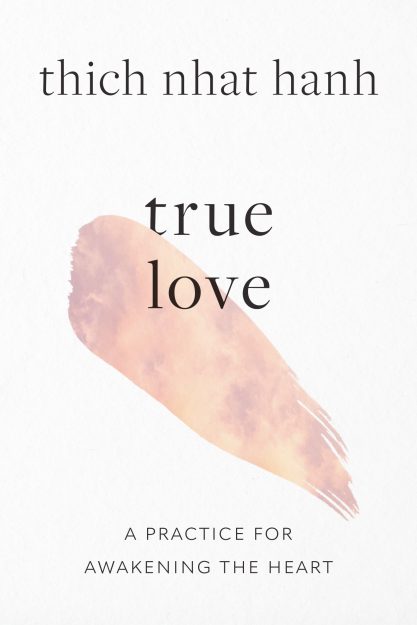To love, in the context of Buddhism, is above all to be there. But being there is not an easy thing. Some training is necessary, some practice. If you are not there, how can you love? Being there is very much an art, the art of meditation, because meditating is bringing your true presence to the here and now. The question that arises is: Do you have time to love?
I know a boy of 12 whose father asked him one day: “Son, what would you like for your birthday present?” The boy did not know how to answer his father, who was a very rich man, able to buy anything for his son. But the boy did not want anything except his father’s presence. Because the role the father played kept him very busy, he did not have time to devote to his wife and children. Being rich is an obstacle to loving. When you are rich, you want to continue to be rich, and so you end up devoting all your time, all your energy in your daily life, to staying rich. If this father were to understand what true love is, he would do whatever is necessary to find time for his son and his wife.
The most precious gift you can give to the one you love is your true presence. What must we do to really be there? Those who have practiced Buddhist meditation know that meditating is above all being present: to yourself, to those you love, to life.
So I would propose a very simple practice to you, the practice of mindful breathing: “Breathing—I know that I am breathing in; breathing—I know that I am breathing out.” If you do that with a little concentration, then you will be able to really be there, because in our daily life our mind and our body are rarely together. Our body might be there, but our mind is somewhere else. Maybe you are lost in regrets about the past, maybe in worries about the future, or else you are preoccupied with your plans, with anger or with jealousy. And so your mind is not really there with your body.
The most precious gift you can give to the one you love is your true presence.
Between the mind and the body, there is something that can serve as a bridge. The moment you begin to practice mindful breathing, your body and your mind begin to come together with one another. It takes only ten to twenty seconds to accomplish this miracle called oneness of body and mind. With mindful breathing, you can bring body and mind together in the present moment, and every one of us can do it, even a child.
The Buddha left us an absolutely essential text, the Anapanasati Sutta, or Discourse on the Practice of Mindful Breathing. If you really want to practice Buddhist meditation, you must study this text.
If the father I was talking about had known that, he would have begun to breathe in and breathe out mindfully, and then one or two minutes later, he would have approached his son, he would have looked at him with a smile, and he would have said this: “My dear, I am here for you.” This is the greatest gift you can give to someone you love.
In Buddhism we talk about mantras. A mantra is a magic formula that, once it is uttered, can entirely change a situation, our mind, our body, or a person. But this magic formula must be spoken in a state of concentration, that is to say, a state in which body and mind are absolutely in a state of unity. What you say then, in this state of being, becomes a mantra.
So I am going to present to you a very effective mantra, not in Sanskrit or Tibetan, but in English: “Dear one, I am here for you.” Perhaps this evening you will try for a few minutes to practice mindful breathing in order to bring your body and mind together. You will approach the person you love and with this mindfulness, with this concentration, you will look into his or her eyes, and you will begin to utter this formula: “Dear one, I am really here for you.” You must say that with your body and with your mind at the same time, and then you will see the transformation.
Do you have enough time to love? Can you make sure that in your everyday life you have a little time to love? We do not have much time together; we are too busy. In the morning while eating breakfast, we do not look at the person we love, we do not have enough time for it. We eat very quickly while thinking about other things, and sometimes we even hold a newspaper that hides the face of the person we love. In the evening when we come home, we are too tired to be able to look at the person we love.
We must bring about a revolution in our way of living our everyday lives, because our happiness, our lives, are within ourselves.
⧫

From True Love: A Practice for Awakening the Heart by Thich Nhat Hanh © 1997 by Éditions Terre du Ciel and Unified Buddhist Church, Inc. Translation © 2004 by Shambhala Publications. This edition published in 2023. Reprinted in arrangement with Shambhala Publications, Inc. Boulder, CO. www.shambhala.com
Thank you for subscribing to Tricycle! As a nonprofit, we depend on readers like you to keep Buddhist teachings and practices widely available.
